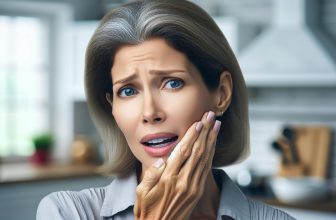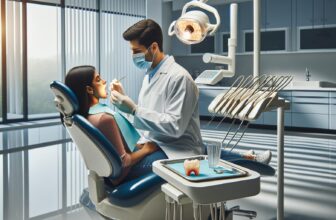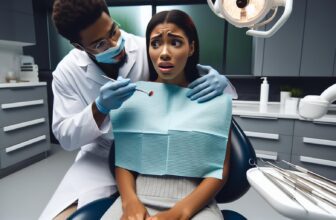
Ever wondered if dentists still use laughing gas? You’re not alone. This age-old question has crossed the minds of many who dread the thought of dental visits. Imagine sitting in that intimidating chair, only to be whisked away into a state of euphoria and giggles. Sounds like a dream, right?
I remember my first encounter with laughing gas as a kid. The dentist transformed from a menacing figure into a friendly magician, turning my fear into a surreal, almost fun experience. But times change, and so do medical practices. So, let’s dive into whether that magical gas still has a place in modern dentistry or if it’s just a nostalgic memory.
Key Takeaways
- Continued Use of Laughing Gas: Despite advancements in dental technology, laughing gas (nitrous oxide) remains a popular and effective sedation method in modern dentistry, particularly for patients with dental anxiety or undergoing lengthy procedures.
- Historical Significance: Laughing gas has been used in dentistry since the mid-1800s and has maintained its role due to its quick onset, ease of administration, and minimal side effects.
- Common Applications: Modern dentists use laughing gas for various procedures, including extractions, root canals, and deep cleanings. It’s especially beneficial for pediatric and anxious patients.
- Patient Benefits: Laughing gas offers immediate anxiety relief, swift recovery, minimal side effects, and allows patients to remain conscious and communicative during procedures.
- Alternative Sedation Methods: Alternatives to laughing gas include oral sedation, intravenous sedation, and general anesthesia, each with unique benefits suited to different patient needs and procedure complexities.
- Mixed Patient Experiences: While many patients report positive experiences with laughing gas, some encounter side effects such as nausea or discomfort from the administration mask, emphasizing the importance of discussing sedation options with a dentist.
History Of Laughing Gas In Dentistry
Laughing gas, or nitrous oxide, first entered the world of dentistry in the mid-1800s. In 1844, Horace Wells, a dentist from Connecticut, was the first to use it for tooth extraction. It revolutionized pain management, making dental procedures more bearable. Over time, its use spread rapidly due to its effectiveness and ease of administration.
During the late 19th and early 20th centuries, laughing gas became a staple in many dental practices. Dentists found it invaluable for calming anxious patients. By the 1960s, advancements in dental technology and anesthesia expanded the options for pain relief. Despite these advancements, nitrous oxide remained popular.
Modern dentistry still values laughing gas for its quick onset and minimal side effects. Many dentists prefer it for patients with dental anxiety or those undergoing lengthy procedures. It’s considered safe and effective, making it a trusted tool in today’s dental practices.
Modern Uses Of Laughing Gas
Dentists today still employ laughing gas to aid in patient comfort. Its efficacy remains unmatched for several key dental scenarios.
Situations Where It Is Commonly Used
Laughing gas, or nitrous oxide, sees frequent use in procedures involving complex dental work. Extractions, root canals, and deep cleanings are prime examples. I notice it greatly helps patients with dental anxiety. Younger patients, in particular, often benefit during cavity fillings or orthodontic adjustments. It’s also a go-to sedation method for those with low pain tolerance.
During longer dental procedures, laughing gas ensures patient relaxation without extended recovery times. As a dentist, I see it being used regularly in pediatric dentistry due to its non-invasive nature. It’s also effective for patients with sensitive gag reflexes or those undergoing multiple treatments in a single visit. By offering a quick onset of calming effects, nitrous oxide addresses various patient needs efficiently.
Benefits For Patients
Patients experience numerous advantages when opting for laughing gas. It offers immediate relief from anxiety and fear. They remain conscious and responsive, which allows for easy communication. Recovery is swift, enabling them to drive home or continue daily activities right after the appointment.
I find that laughing gas has minimal side effects compared to other forms of sedation. It’s safe for use in both adults and children, making it versatile. By reducing discomfort and pain, patients show greater cooperation during procedures. The ease of administration through a mask means there’s no need for needles, appealing to those apprehensive about injections.
Furthermore, nitrous oxide’s quick clearance from the body ensures patients don’t endure prolonged drowsiness. This efficiency, alongside its calming properties, solidifies its role as a preferred sedation method in modern dentistry.
Alternatives To Laughing Gas
In modern dentistry, several alternatives to laughing gas are available for patient sedation. Each offers unique advantages depending on the patient’s needs and the complexity of the dental procedure.
Sedation Dentistry Options
Oral sedation involves taking a prescribed pill, usually an hour before the procedure. It reduces anxiety, making patients very relaxed, though they remain conscious. The sedation level ranges from minimal to moderate, based on the dosage.
Intravenous (IV) sedation, commonly used in more invasive procedures, delivers medication directly into the bloodstream. Dentists can achieve deeper sedation levels with this method. Patients may drift in and out of consciousness but often have little memory of the procedure.
Inhalation sedation, involving nitrous oxide, remains popular due to its quick onset and immediate recovery. However, other options like intravenous and oral sedation provide different levels of comfort and can be more effective for specific patient needs.
Local anesthesia, though primarily used for pain management rather than sedation, is also an option. It involves injecting medication directly into the gum or cheek area, effectively numb the mouth during the procedure.
General Anesthesia
For complex dental procedures or patients with severe anxiety, general anesthesia is sometimes necessary. It involves the patient being completely unconscious and is typically performed in a hospital or specialized clinic. An anesthesiologist or a specially trained dentist administers it.
Compared to laughing gas, general anesthesia ensures the patient is entirely unaware of the procedure, offering maximum comfort. Recovery may take longer, and patients usually need someone to accompany them home.
Dentists usually reserve general anesthesia for extensive surgeries, such as wisdom tooth extraction or jaw realignment. It may also be essential for patients with special needs who cannot remain still during lengthy procedures.
Overall, while laughing gas is still widely used, understanding these alternatives is crucial for making informed choices about dental care. Each choice depends on the patient’s specific needs and the nature of the dental work.
Patient Experiences And Testimonials
Laughing gas continues to be a popular choice due to its calming effects and minimal side effects. Patients often share their personal experiences, which provide valuable insights into its use in modern dentistry.
Positive Feedback
Many patients praise laughing gas for its ability to alleviate anxiety. Jane, a fearful dental patient, mentioned that nitrous oxide made her root canal procedure almost stress-free. She noted her calmness and ability to communicate during the treatment. John, another patient, found it particularly helpful for his severe gag reflex, allowing him to undergo a lengthy dental cleaning without discomfort. Parents often express gratitude for its use with their children. For instance, Maria shared that her son’s first filling was a breeze, thanks to the laughing gas, which made him giggle and remain still throughout. Elderly patients also appreciate nitrous oxide. Sam, aged 70, said it helped him manage the discomfort during his denture fittings, making the process much easier. Overall, many testimonials highlight the rapid onset and ease of recovery as significant benefits of using laughing gas.
Negative Feedback
However, not all experiences are positive. Some patients report feeling nausea after inhaling nitrous oxide. Lisa, who underwent a tooth extraction, experienced dizziness and slight nausea post-procedure, making her hesitant to use it again. Tom shared that the mask used for administering the gas felt uncomfortable and claustrophobic. His discomfort overshadowed the calming effects of the gas. Marissa mentioned that, although relaxing, the gas did not entirely eliminate her pain during a particularly tough extraction. Few patients also complain about the lingering numbness. Jim noted that while the gas worked wonders during the procedure, he disliked the sensation of numbness that persisted for hours afterward. These negative experiences highlight the importance of discussing individual concerns with a dentist before deciding on laughing gas.
Conclusion
Laughing gas remains a valuable tool in modern dentistry for managing patient anxiety and discomfort. While it’s not the only option available oral sedation and general anesthesia offer alternatives that might suit different needs. Patient experiences with laughing gas vary so it’s essential to discuss any concerns with your dentist beforehand. Understanding all your options can help ensure a more comfortable and stress-free dental visit.
Frequently Asked Questions
What is laughing gas and how is it used in dentistry?
Laughing gas, or nitrous oxide, is a sedative used in dentistry to help calm anxious patients. It is inhaled through a mask during dental procedures, providing a sense of relaxation and reducing discomfort.
What are the alternatives to laughing gas for dental sedation?
Alternatives to laughing gas include oral sedation, which involves taking medication before the procedure, and general anesthesia, which renders the patient completely unconscious during the treatment.
How effective is laughing gas in reducing dental anxiety?
Many patients find laughing gas highly effective in reducing dental anxiety, making it easier for them to undergo dental procedures without fear or discomfort.
Are there any side effects associated with laughing gas?
Yes, some patients may experience side effects like nausea, discomfort from the mask, or lingering numbness. It is important to discuss these potential issues with your dentist beforehand.
Can I drive home after using laughing gas for my dental procedure?
Yes, unlike general anesthesia, the effects of laughing gas wear off quickly, and patients typically feel normal soon after the procedure, allowing them to drive home safely.
How should I communicate my concerns about dental sedation with my dentist?
Be open and honest with your dentist about your concerns regarding dental sedation. Discuss your anxiety levels, previous experiences, and any potential side effects you wish to avoid.
Is laughing gas safe for children during dental procedures?
Laughing gas is generally considered safe for children and is often used to help them remain calm during dental treatments. Always consult your dentist to ensure it is the best option for your child.








